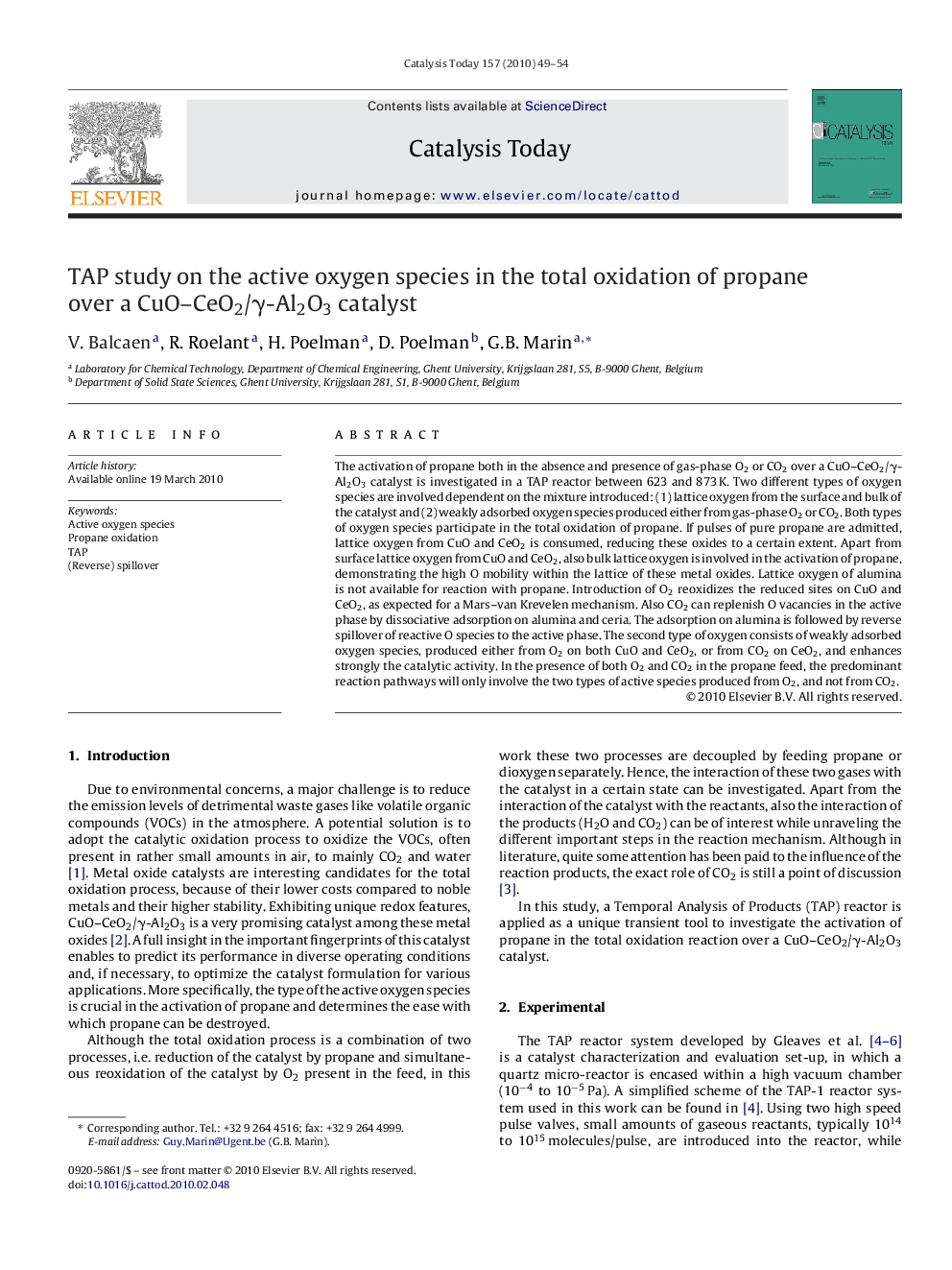| Article ID | Journal | Published Year | Pages | File Type |
|---|---|---|---|---|
| 56194 | Catalysis Today | 2010 | 6 Pages |
The activation of propane both in the absence and presence of gas-phase O2 or CO2 over a CuO–CeO2/γ-Al2O3 catalyst is investigated in a TAP reactor between 623 and 873 K. Two different types of oxygen species are involved dependent on the mixture introduced: (1) lattice oxygen from the surface and bulk of the catalyst and (2) weakly adsorbed oxygen species produced either from gas-phase O2 or CO2. Both types of oxygen species participate in the total oxidation of propane. If pulses of pure propane are admitted, lattice oxygen from CuO and CeO2 is consumed, reducing these oxides to a certain extent. Apart from surface lattice oxygen from CuO and CeO2, also bulk lattice oxygen is involved in the activation of propane, demonstrating the high O mobility within the lattice of these metal oxides. Lattice oxygen of alumina is not available for reaction with propane. Introduction of O2 reoxidizes the reduced sites on CuO and CeO2, as expected for a Mars–van Krevelen mechanism. Also CO2 can replenish O vacancies in the active phase by dissociative adsorption on alumina and ceria. The adsorption on alumina is followed by reverse spillover of reactive O species to the active phase. The second type of oxygen consists of weakly adsorbed oxygen species, produced either from O2 on both CuO and CeO2, or from CO2 on CeO2, and enhances strongly the catalytic activity. In the presence of both O2 and CO2 in the propane feed, the predominant reaction pathways will only involve the two types of active species produced from O2, and not from CO2.
